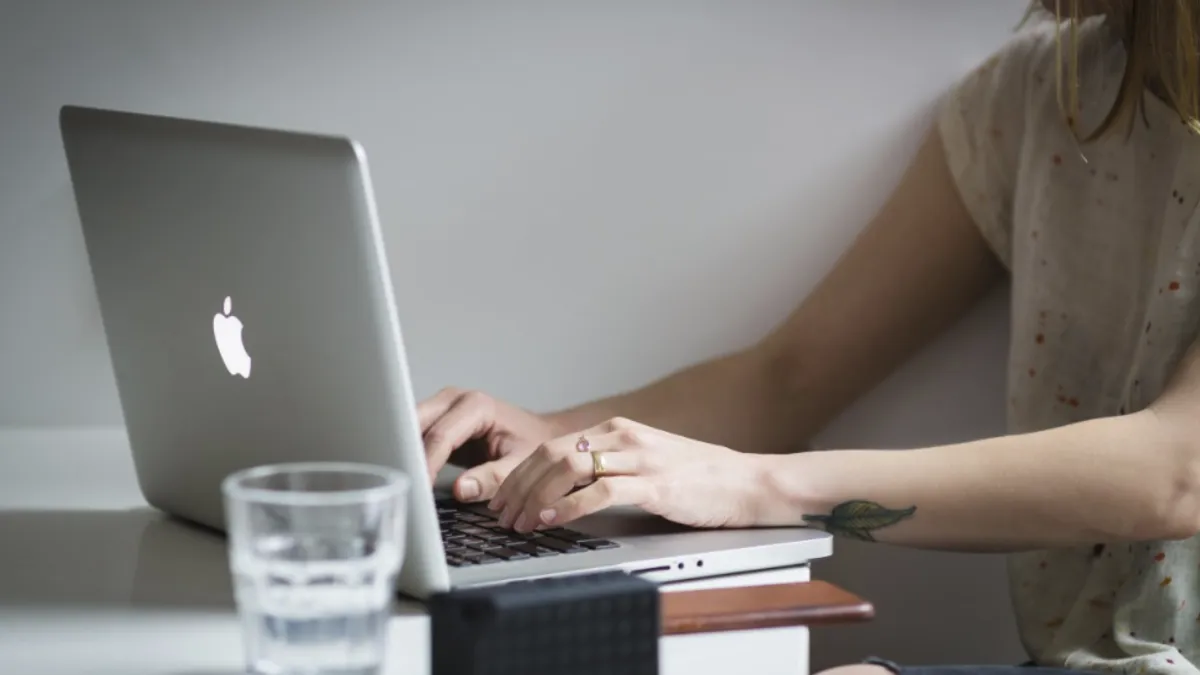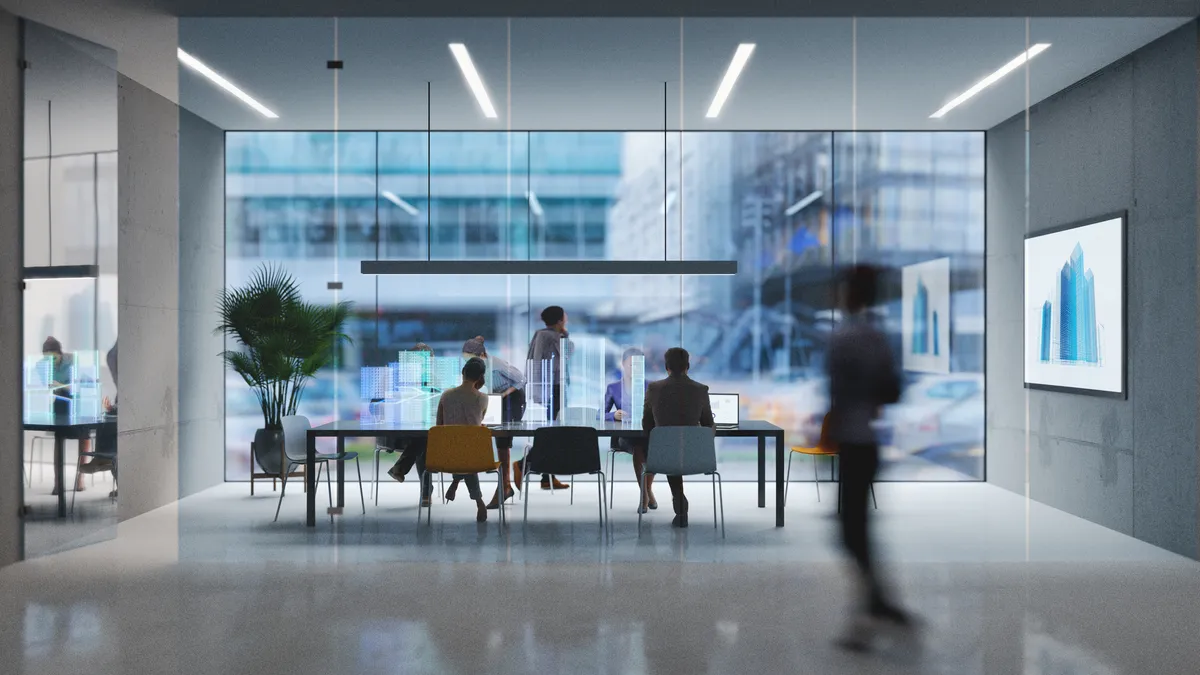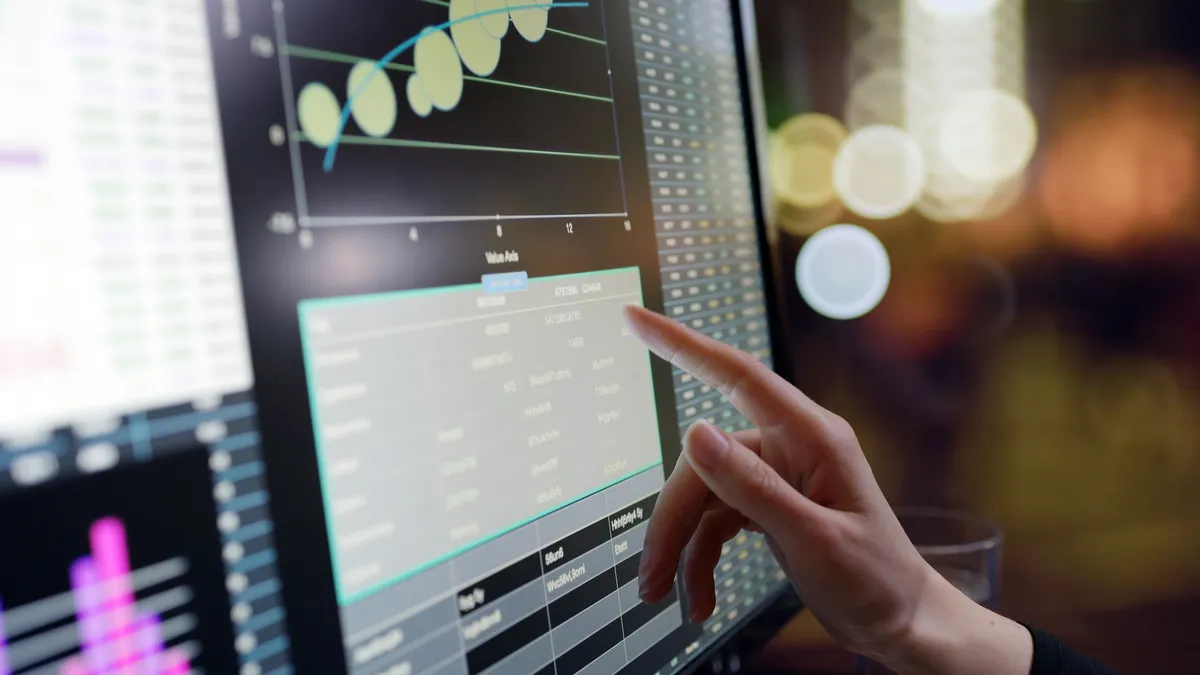Many companies promised to evolve last summer following the racial reckoning set off by the murder of George Floyd, and social media management company Hootsuite was no different.
The company announced in a series of Instagram posts that it would pause its Hootsuite CXN event to focus on the "collective anger, grief, and deep frustrations" of its Black employees and communities, and that it would bring renewed focus to its DE&I processes. More recently, Hootsuite furthered its focus on employee mental health by announcing a companywide week off — or "Wellness Week" — which will take place from July 5 to July 12.
Tara Ataya, chief people and diversity officer at Hootsuite, talked to HR Dive about how the company has developed an inclusive approach to employee wellness. This conversation has been edited for length and clarity.
HR DIVE: Last year on June 1, Hootsuite put up an Instagram post that committed to reviewing and updating the diversity and inclusion guidelines and training. Can you tell me a little bit about that process and what resulted from that?
TARA ATAYA: We have done a ton in the last year, around our diversity, equity and inclusion work. We hired somebody to focus primarily on the systems work — the work that continues regardless of the passengers on the train and as people get on and off that train.
[We focused on] moving our organization beyond the unconscious bias training that a lot of companies focus on and really making sure that we're focusing on our benefits. Last year, we went through our first pay equity audit and analysis. We've now gone through this second one.
In the first one, we corrected for any pay discrepancies that were found that couldn't be attributed to performance metrics or anything specifically related to the capabilities required for the job. This year, we went through our second analysis and had no pay inequities, which was amazing. We were really pleased with that.
I think a lot of that comes down to the work we've done around our hiring and promotions processes, to make sure that those are equitable. It's a panel-based decision. So we've made sure that we have a diverse group of people assessing the candidates for promotion or for hire, to ensure that it's not just one single decision-maker. That helps check the biases in the room.
Some of the other core work we've done since then has really been focused on health and wellness. We're revisiting all of our benefits globally. We focused on North America — the largest [employee] population we have is both in the U.S. and Canada — and we [introduced] an app called Headspace, which is focused on mental health. But we also tripled our support for mental health services from a benefit standpoint, to make sure that we weren't just at market, we were above market for all of those things.
That process was focused on being inclusive as well and meeting employees where they were at. So focus groups were done, surveys were done of our employees, and we know that the pandemic was a more difficult time for underrepresented groups, and it was disproportionate in terms of the strain on mental health and wellness and so we wanted to make sure that we were focused on the DE&I lens, when we looked at a benefits review.
And so we also looked at gender affirmation surgery and we've implemented that as part of our benefits. We have financial advisory services as part of our employee assistance program and that's a global program because financial health is also a really key factor in making sure that employees are taking care of their wellness; [financial stress] can put a huge strain on their health and well-being.
Does Hootsuite have any other mental health offerings that you want to expand on?
Last year we rolled out what we call "Ow.ly time" — at Hootsuite, all of our people are "owls" or "peeps." That equates to half days on Fridays during the summer. We focus that on wellness to give people the space to take time on the Friday for Q3 in the Northern Hemisphere, Q1 in the Southern Hemisphere.
We also just introduced a companywide Wellness Week, where our entire company globally is shutting down for a week. This is not forcing employees to use their vacation time; this is in addition to their normal paid time off. There's something special about having everybody off at the same time. There's less likelihood that people are checking their emails or messaging each other. There's more accountability to take the time.
The other thing we've done is create this contest globally to encourage our employees to take vacation time. There are trips that they can win when everything opens up again. If they can take the majority of their vacation time, there are [about] 20 different prizes that people can win for taking time off. It's one of those things where we think about having people slow down in order to speed up. You're more productive, you're more energized when you've taken the time, when you're able to focus on you and your mental health.
We also offered additional paid sick leave during the pandemic. It's still going on right now. The days can be used for mental health, they can be used as personal days.
What did you do to ensure that Hootsuite had an inclusive approach to the process of expanding your mental health offerings?
We did focus groups with employees. We asked all employees to volunteer, so everybody had an opportunity to do that. And then we actually promoted it through leaders to get leaders to also encourage their teams to participate, and it was about enrollment in the process from the get-go when we were looking at benefits design. It's not just about the end result, it's about making sure that you're taking employees on the journey — having those focus groups, having surveys.
Right now we're surveying employees in the U.K. One of the greatest needs that surfaced was around neurodiversity support for kids. In the U.S., fertility treatment was top of mind. So I think it's really about providing the space and opportunity to be inclusive and hear all of the voices that are willing to participate. Not everybody's going to be a consumer of the benefits — some people are more interested in other offerings from a total rewards perspective — but it's about making sure that you have those conversations before you make the decisions around how you support people.
In addition, one of the key elements of our employee assistance program is culturally appropriate trauma counseling, and you know with the murder of George Floyd ... There have been so many different instances of social trauma over the last year and before. It has been such an area of focus, so it's really important that employees have culturally appropriate counselors available to them through difficult times.
One of the really important things that organizations can do to make sure that they're meeting employees where they are is talk to their employees, rather than making assumptions. It's really about getting to know where your employees are, what the greatest need is, and then taking a very agile approach to test and iterate the things — being okay with testing something out and if it doesn't work, trying something else. But doing nothing just isn't an option when it comes to employee mental health and wellness.
What would you say is the biggest supportive factor from among your mental health offerings? So for example, if a company wanted to get into offering something in the mental health space but they just wanted to start with one thing, what would you suggest?
It's a tough question. I don't know that it's the biggest impact, but step one is talking about mental health and wellness. That's one of the key factors in helping destigmatize mental health challenges. You need your executive leaders to talk about self-care, to talk about mental health, to talk about what's challenging, so that people know it's okay to talk about it and share resources. I think that that's probably one of the single biggest things you can do up front.
What are some of the takeaways that you've seen in terms of employee participation, engagement and culture?
I joined Hootsuite just over a year ago, and our engagement has gone up over 15% in the time that we have focused on wellness, on employee self-care, on connectedness, and on diversity, equity and inclusion. We've seen just a tremendous shift in morale from the company standpoint.
Because we're a social company, we live out loud in our culture, so we hear constantly from employees how supported they've felt. Even for employees moving on, we see it in the exit interviews. And I think that's a great testament to the work that the leadership team and other teams have done. The HR function rolls out some of these programs, but they really need to be adopted and lived by all of our leaders.
Going back again to that paid time off in July. That seems like a pretty drastic measure — in a good way. Can you talk a little bit about how the leaders of Hootsuite came to that decision?
It started with a discussion amongst our exec team about how we could support mental health and wellness. We were recognizing that a year-plus into the pandemic, people need time. They need the time and space to slow down to focus on themselves to have self-care be a top priority. One of the ways that we talked about doing that and providing employees with that space was the week off. And everybody around the virtual table was very supportive of that.
The feedback among our employee base has been overwhelmingly positive and I think that speaks to the fact that people needed it. We could all use that week to reflect and take some time away. We'll see how this goes and if it works, we're going to continue this over time and think about other ways to give people the time and space that they need.




















